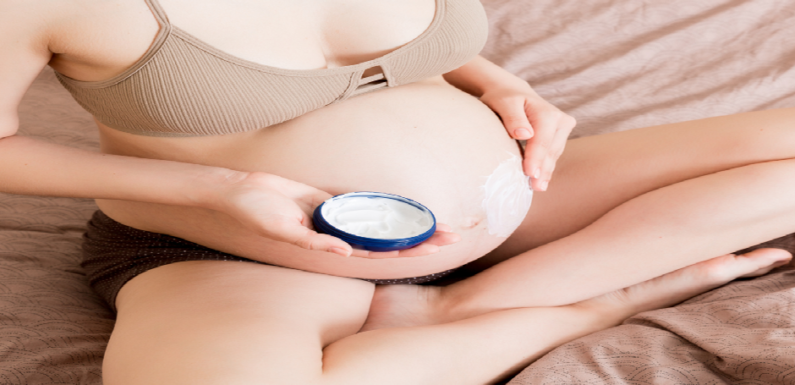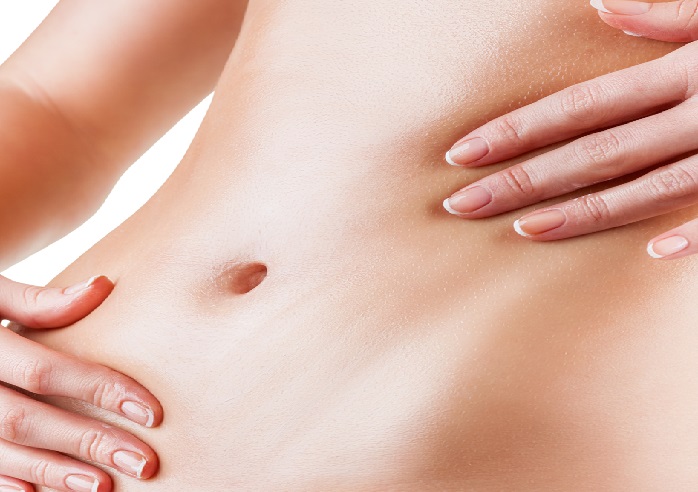
Pregnancy stretch marks are a common concern for many women during and after pregnancy. These marks, also known as striae gravidarum, appear as red, purple, or silver streaks on the skin and often occur on the abdomen, breasts, hips, and thighs. While pregnancy stretch marks are a natural part of the body’s response to rapid growth and stretching, treating them with care is essential for maintaining skin health and confidence during the postpartum period.
Understanding Pregnancy Stretch Marks
Pregnancy stretch marks develop when the skin’s connective tissues are stretched beyond their limits, causing the collagen and elastin fibres to break down. As the skin stretches to accommodate the growing baby bump, it may become thinner and less elastic, making it more prone to developing stretch marks. While genetics play a role in determining who is more susceptible to pregnancy stretch marks, factors such as weight gain, hormonal changes, and hydration levels can also influence their development.
Caring for Postpartum Belly and Stretch Marks
After giving birth, many women experience changes in their bodies, including a postpartum belly and stretch marks. While these changes are natural and often temporary, treating them with care can help improve skin elasticity and reduce the appearance of stretch marks over time. Incorporating gentle skincare routines, staying hydrated, and maintaining a healthy lifestyle can all contribute to supporting skin health and promoting healing in the postpartum period.
Nourishing the Skin with Moisturisers and Oils
Moisturising the skin regularly with hydrating lotions, creams, and oils can help improve its elasticity and reduce the severity of pregnancy stretch marks. Look for products containing ingredients such as cocoa butter, shea butter, vitamin E, and hyaluronic acid, which are known for their moisturising and skin-nourishing properties. Applying moisturisers to the abdomen, breasts, hips, and thighs can help keep the skin hydrated and supple, minimising the risk of developing new stretch marks and supporting the healing process.
Incorporating Gentle Massage Techniques
Massaging the skin with gentle, circular motions can help improve blood circulation, promote collagen production, and stimulate the skin’s natural healing processes. Incorporating massage techniques into your skincare routine can help soften the appearance of pregnancy stretch marks and encourage skin regeneration. Use a lightweight oil or lotion to lubricate the skin and minimise friction during the massage, focusing on areas prone to stretch marks such as the abdomen and hips.
Maintaining a Healthy Diet and Hydration
Eating a balanced diet rich in vitamins, minerals, and antioxidants is essential for supporting skin health and promoting healing during the postpartum period. Foods high in vitamin C, vitamin E, zinc, and collagen-building nutrients can help strengthen the skin’s structure and reduce the appearance of stretch marks. Additionally, staying hydrated by drinking plenty of water throughout the day can help keep the skin hydrated and plump, reducing the risk of dryness and itchiness associated with pregnancy stretch marks.
Seeking Professional Treatments and Consultation
In some cases, pregnancy stretch marks may persist despite diligent skincare efforts. In such instances, seeking professional treatments and consultation from dermatologists or skincare specialists may be beneficial. Treatments such as laser therapy, microdermabrasion, chemical peels, and microneedling can help improve the appearance of stretch marks and promote collagen production in the skin. However, it is essential to consult with a healthcare professional to determine the most appropriate treatment options based on individual skin type and concerns.

Conclusion: Prioritising Skin Health During and After Pregnancy
Treating pregnancy stretch marks with care is essential for maintaining skin health and confidence during the postpartum period. By understanding the factors contributing to the development of stretch marks, adopting gentle skincare routines, nourishing the skin with moisturisers and oils, incorporating massage techniques, maintaining a healthy diet and hydration, and seeking professional treatments when needed, women can support their skin’s natural healing processes and minimise the appearance of stretch marks over time. Prioritising skin health during and after pregnancy is key to feeling confident and comfortable in one’s skin.
Contact Orchard Clinic today for more information.

